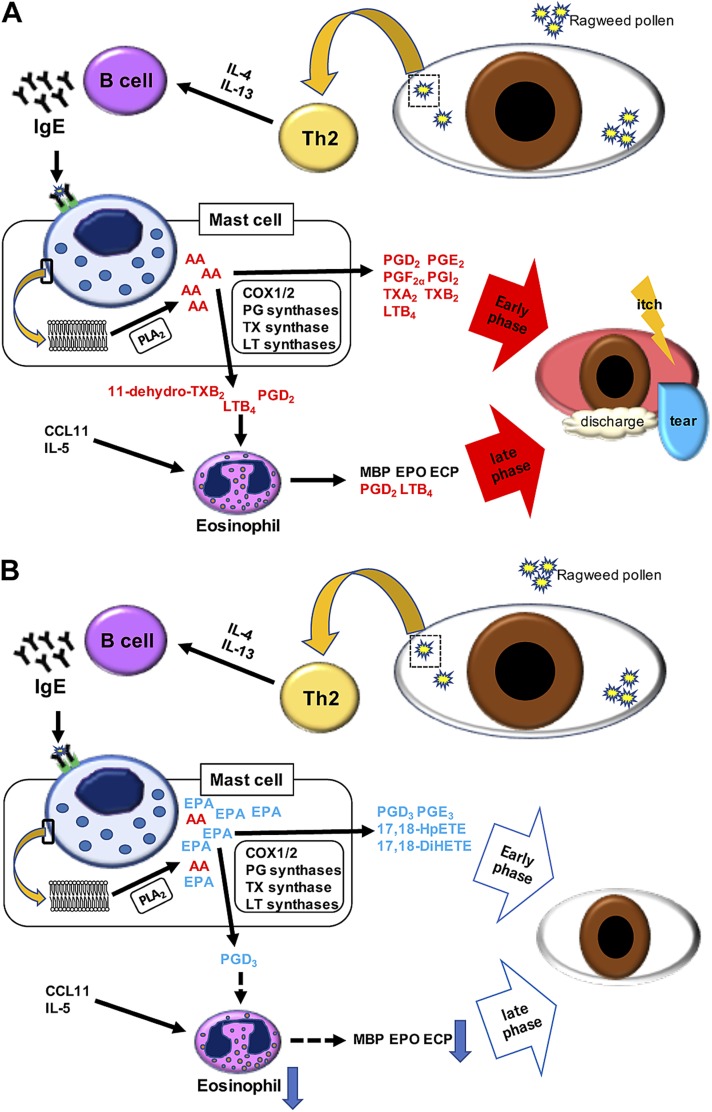Figure 8.
Mechanisms of AC suppression by ω-3 diet. A) The control diet: Th2 cells produce IL-4 and -13, which activate B cells. These activated B cells produce IgE, which activates mast cells. In the activated mast cells, free AA is produced from the phospholipid membrane by PLA2, and proinflammatory lipid mediators are synthesized by enzymes such as oxygenases and terminal prostanoid synthases. These proinflammatory lipid mediators elicit allergic symptoms in the early phase such as conjunctival redness, discharge, and itch. These lipid mediators such as PGD2 and LTB4 also play a role in attracting eosinophils. Infiltrated eosinophils produce inflammatory mediators and cause the late-phase allergic symptoms. B) The ω-3 diet: dietary ω-3 fatty acids do not alter the Th2 immune response, but increase the EPA content in the membrane phospholipids. Free EPA liberated by PLA2 competes with AA, and reduces the production of AA-derived mediators, resulting in the reduction of proinflammatory lipid mediators. Furthermore, lipid mediators derived from EPA function as anti-allergic or proresolving mediators. This altered lipid profile leads to the alleviation of AC in both the early and late phases.

